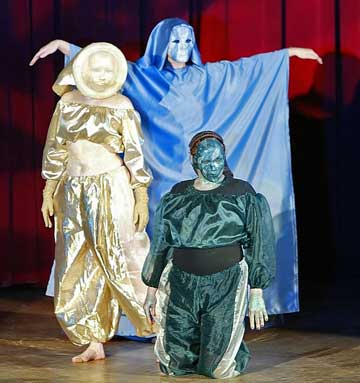 by Preston MacDougall November 29, 2007
Dramatic news last week, from the world of science, tells of how stars of the cellular world - stem cells - were born from mature cells that had been "aged in skin". While no amount of plastic surgery will turn Dame Judi Dench into the next Broadway starlet, two teams of scientists have succeeded in reprogramming human skin cells into behaving like human embryonic stem cells.
What this means is that a waning skin cell - one that has no future ahead of it, other than becoming a wrinkle, in time - had its genetic programming altered via biochemical manipulation so that it could undergo differentiation into many other cell types, such as muscle cells. This is amazing science, and we should not only be thankful that the scientists were successful, but that they had the audacity to attempt this supernatural feat. I also imagine that many politicians are hopeful that this means an end to having to choose sides in the embryonic stem-cell debate. In this debate, there was simply no way to please the entire audience - and get their votes. If you were in favor of advancing the most promising biomedical research, then you were accused of not respecting human life in all its forms (even when it is formless, as blastocysts are). We should also be thankful that the ban on federal funding of embryonic stem-cell research didn't stop the private funding of such research at the University of Wisconsin, where one of the successful teams is based. Nor did it stop such research in Japan, where the other team is based. The Japanese team also has research labs in California, which endorsed state-funded embryonic stem-cell research via Proposition 71 in 2004 - a campaign that was championed by an unnaturally muscular Governor. The headline in the New York Times read "Scientists Bypass Need for Embryo to Get Stem Cells", so you may be wondering why I am thankful for the funding of embryonic stem-cell research, and not the federal restrictions on it. The reason is as simple as the science is beautiful. Here is how the two teams achieved their breakthrough. Like all cell biologists, they knew that a human cell expresses its identity, not just by the face it shows under the microscope lights, and not just by the role it plays in our body's stage, but also by the proteins that it expresses within itself. For instance, muscle cells are genetically programmed to express the proteins actin and myosin in relatively large proportions. When given their biochemical cues, these proteins interact with each other leading to contraction, followed by relaxation. There are thousands of proteins that are expressed in varying amounts in different cell types. And there is a gene that is turned "on" for every protein that is expressed. As a cell ages, some genes get turned "off", permanently. Or so we thought. The question with the winning answer was "Which proteins are expressed in an embryonic stem cell, and are not expressed in a mature skin cell?" To answer this question without examining embryonic stem cells, would be like writing a Broadway review comparing an understudy's performance to the original cast member, without seeing the star's performance. Even with access to pristine embryonic stem-cells, this task is more labor-intensive than it sounds. "Like looking for a needle in a haystack" just doesn't cut it - especially since the development of surprisingly powerful neodymium magnets. The task was more like looking for a few unmatched needles in two wardrobe crates full of costumes and props, as well as needles with thousands of shapes, and not knowing what kind of needles were in one but not the other. And, oh yes, you can't see the needles - you can only subject them to chemical analyses after painstakingly separating them from each other. The two teams found four genes, two of which were in common, that were required to reprogram a mature skin cell so that it would express itself much like an embryonic stem cell. These genes were inserted with viruses, but other gene-insertion techniques, perhaps of a pharmaceutical nature, will likely be developed in the future. Science has more in common with the theatre than drama and rising stars - both have their hecklers and critics. Some will say this is just another sinful bite out of the proverbial apple, and that scientists should stop "playing God". (The latest research doesn't start with embryos, but it seems to have the potential to create them.) Other critics will call for cessation of research on human stem cells taken from discarded blastocysts, even though the current breakthrough depended on it. Who is to say that the fully-stocked crates do not hold the promise of even more dramatic discoveries? If anything, such research should be accelerated. If you need one more reason
to feel thankful for these heroic scientific efforts, and to
give these two research groups, as well as their sponsors, a
round of applause - standing if you're able, with extra enthusiasm
if not - consider this: One of the genes, that both groups needed
to insert, is known to cause cancer. And as we all know, accidents
can happen, even without any mischief.
On the Web:
E-mail your letters & opinions to editor@sitnews.us SitNews ©2007 Stories In The News Ketchikan, Alaska |
||
